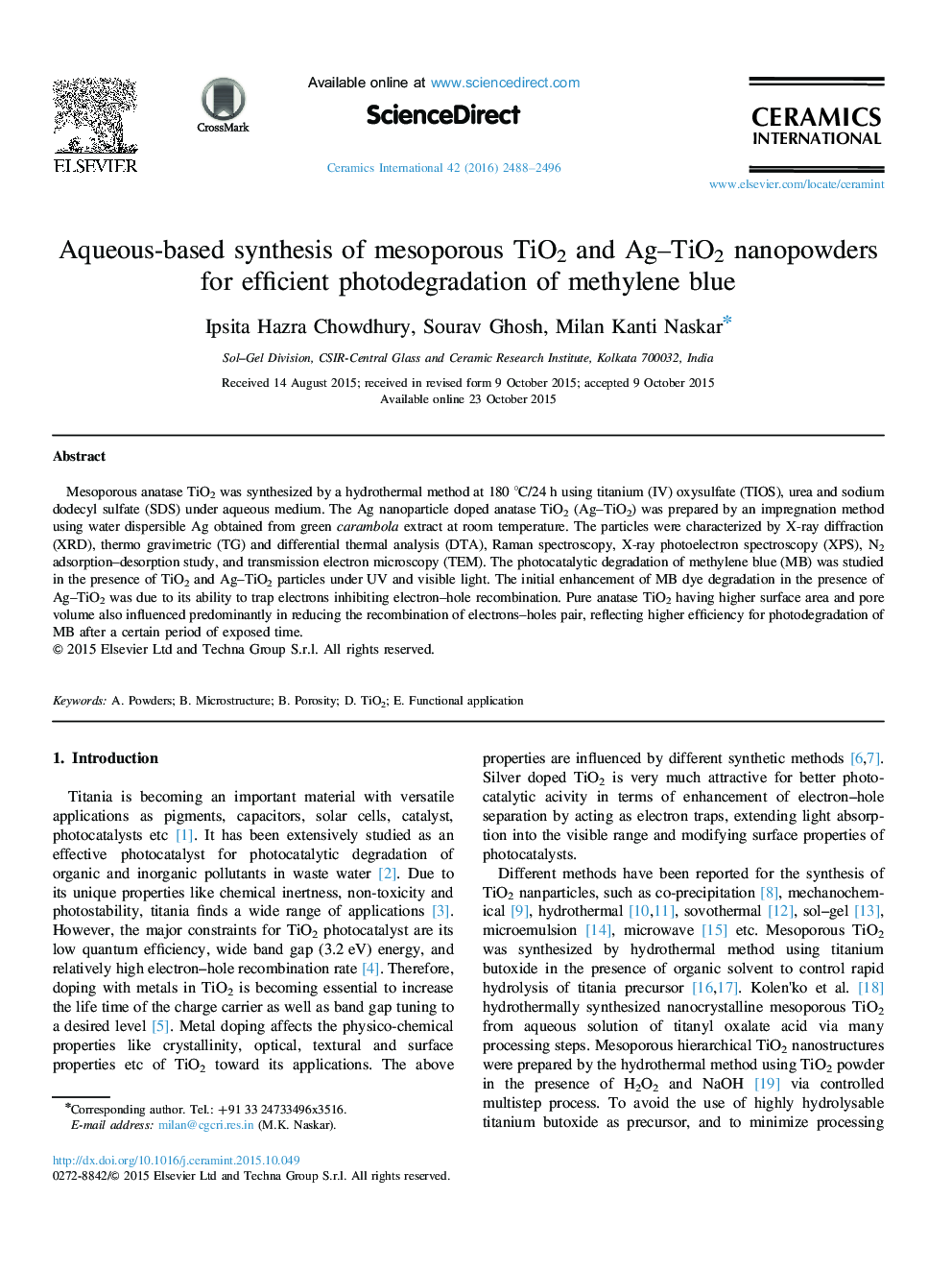| Article ID | Journal | Published Year | Pages | File Type |
|---|---|---|---|---|
| 1458940 | Ceramics International | 2016 | 9 Pages |
Mesoporous anatase TiO2 was synthesized by a hydrothermal method at 180 °C/24 h using titanium (IV) oxysulfate (TIOS), urea and sodium dodecyl sulfate (SDS) under aqueous medium. The Ag nanoparticle doped anatase TiO2 (Ag–TiO2) was prepared by an impregnation method using water dispersible Ag obtained from green carambola extract at room temperature. The particles were characterized by X-ray diffraction (XRD), thermo gravimetric (TG) and differential thermal analysis (DTA), Raman spectroscopy, X-ray photoelectron spectroscopy (XPS), N2 adsorption–desorption study, and transmission electron microscopy (TEM). The photocatalytic degradation of methylene blue (MB) was studied in the presence of TiO2 and Ag–TiO2 particles under UV and visible light. The initial enhancement of MB dye degradation in the presence of Ag–TiO2 was due to its ability to trap electrons inhibiting electron–hole recombination. Pure anatase TiO2 having higher surface area and pore volume also influenced predominantly in reducing the recombination of electrons–holes pair, reflecting higher efficiency for photodegradation of MB after a certain period of exposed time.
